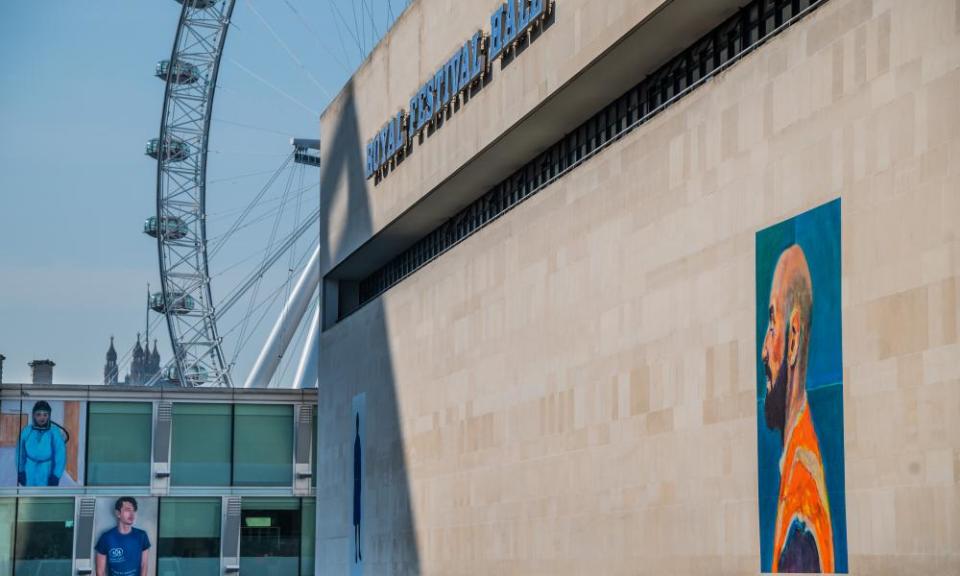UK tourism venues embrace the great outdoors to survive the pandemic
In a remote corner of the Yorkshire Dales, there’s an unusual sight among the farm animals this winter. On the terrace of the Courtyard Dairy cheese shop, next to a colourful cow sculpture, sit a pair of Alpine intruders. The interlopers are not of the four-legged variety; they are ski gondolas, once used to whisk holidaymakers up the pistes of Courchevel in the French Alps. Now, these snug pods offer visitors the chance to feast on Alpine specialities such as raclette and fondue.
For owner Andy Swinscoe, bringing his cafe outside has been a lifeline in a bleak period. Around 75% of his business was lost during lockdown. Since then, the cafe and museum that had made the dairy a Dales’ destination for tourists have had to remain closed. Over summer, he introduced a cheese vending machine and started selling takeaway coffee and ice-cream, but says: “We felt like without the cafe, even though it was not the biggest part of our business, we had lost our appeal. Because we are in the middle of nowhere, we needed that draw to get people to us.” Andy invested in the gondolas in July and because they are socially distanced and protected from the elements, they’ve been a hit.
The area is brimming with businesses being creative about how to extend their season, increase capacity and financially survive a Covid winter. The Tan Hill Inn – Britain’s highest pub, also a hotel – recently featured in the Yorkshire Post for its new eat-in stargazing pods. With more than half the population of England living with tier 2 or 3 restrictions, socialising indoors is difficult or impossible, and demand for patio heaters has already soared. Like it or not, we’re going to be spending more time outside this winter.
In the Cotswolds, adventure company Far Peak moved its child-friendly bouldering facilities outdoors in June, knowing that restrictions would make it difficult to operate safely indoors for the foreseeable future. It took four days (with an army of local volunteers) to hammer a recycled shipping container into a bouldering wall – with an overhanging roof to protect from the elements.
“That allowed us to be the only climbing centre in the country that was open – until gyms reopened in the middle of August,” says general manager Tom Williams. “We had climbers coming from Manchester, Sheffield and London.”
Meanwhile, museums and galleries are also rethinking their programmes. The Windermere Jetty Museum in Cumbria, which opened last year, has taken its Swallows and Amazons For Ever! exhibition outdoors in an interactive way, adding a Wildcat Island Campfires experience, where family bubbles can set up camp and toast marshmallows on the shore. The Science & Industry Museum in Manchester, housed in a former railway terminus, is this week launching an outdoor trail, and has installed spinning bobbin seating in its yard.
“Making the most of our outdoor spaces into the future is a priority for us,” said Sally MacDonald, director of the museum, prior to Manchester entering tier 3 restrictions.
For art institutions, moving outside is a logistical and aesthetic challenge. It is difficult outdoors to control how the public interacts with artworks, and weather conditions also play a significant role. The Southbank Centre in London is one arts body that has shifted its focus outside while the buildings remain closed. Works of art in the Everyday Heroes exhibition (until 1 November) and an upcoming Koestler show (from 12 November) are either being displayed in windows or on the rooftops and facades, using the architecture as a canvas. But the centre’s curator of site design, Cedar Lewisohn, admits it hasn’t been easy. “If you put something outside it needs to be indestructible,” he says.
Compton Verney art gallery and park in Warwickshire says the pandemic has been a catalyst for it to rethink how indoor and outdoor programmes are connected, and to look at the intersection between wellbeing, art and the outdoors. Visitor capacity for its galleries has been reduced by 50%, so the former stately home has flipped the focus to its extensive parkland, using its £980,000 Culture Recovery Fund grant to increase its outdoor art programme.

“From talking to visitors, we know that they are more comfortable with things that are happening outside,” says Amy Banks, a curator at Compton Verney. From 29 October to 1 November, Compton Verney will host Luke Jerram’s touring artwork Museum of the Moon in its park.
The Balmer Lawn Hotel in the New Forest has managed record-breaking revenue every month since reopening in July – after refocusing on outdoor dining.
“When you consider that is with no meetings or functions, that is a significant achievement,” says general manager Michael Clitheroe. Gifted with abundant space and a big kitchen, the hotel has installed an outdoor bar and new dining concept. The Lodge Kitchen & Bar will open in a large heated stretch tent at the end of October: as it will still be classed as outdoors, different households will be able to socialise there.
“I can categorically tell you we would have had to cap our earning potential at 40% if we hadn’t had that dining capacity,” says Clitheroe. “My advice would be, open up those outside spaces.”

